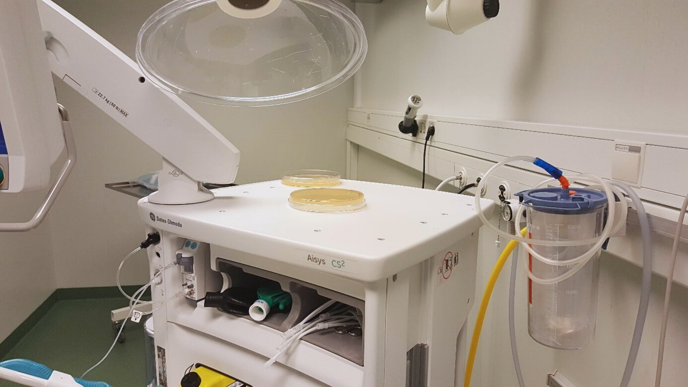
How clean is clean enough?
Project overview
Participants
More related research
Short summary
Cleaning and disinfection are important IPC measures to decrease the amount of environmental bacteria. In this PhD project the bacterial contamination in the environment and on equipment before and after cleaning and disinfection is evaluated.
The overall aim of the PhD project is to improve infection prevention and control (IPC) in veterinary healthcare.
Pathogen bacteria and other microorganisms on near-patient surfaces pose a risk for indirect infection transmission. Gathering many animals in a small area like a veterinary hospital or clinic increases the risk for infection transmission. In recent years, outbreak with resistant bacteria has been reported from veterinary healthcare.
By studying occurring bacteria in the veterinary healthcare environment and the amount of them, we get a picture of the effect of the hygiene routines. That also gives us some basic data to start investigate potential risks different parts of the veterinary healthcare facilities pose for infection transmission. For frequent bacterial species whole genome sequencing can show if there is a house flora or different strains. Studying spreading pattern is extra important when it comes to potentially pathogen and resistant bacteria. In this way, possible sources of infection can be traced, for example if the strain was spread from equipment, a patient, staff, or in another way.
Cleaning is important to decrease the amount of soil and microorganisms on surfaces. In order for cleaning to have good effect, it is important to use mechanical force by, for example, scrubbing the surface. For the disinfectant to have effect, it is important that the surface is clean. It is important to study the effect of cleaning and disinfection of near-patient surfaces and equipment to evaluate if cleaning and disinfection methods used in veterinary healthcare today have desired effect. By measuring the amount of bacteria before and after cleaning and/or disinfection the methods ability to lower the amount of bacteria on a surface can be evaluated. The amount of bacteria on the surface can be compared with threshold values, used in human healthcare, for bacterial contamination.